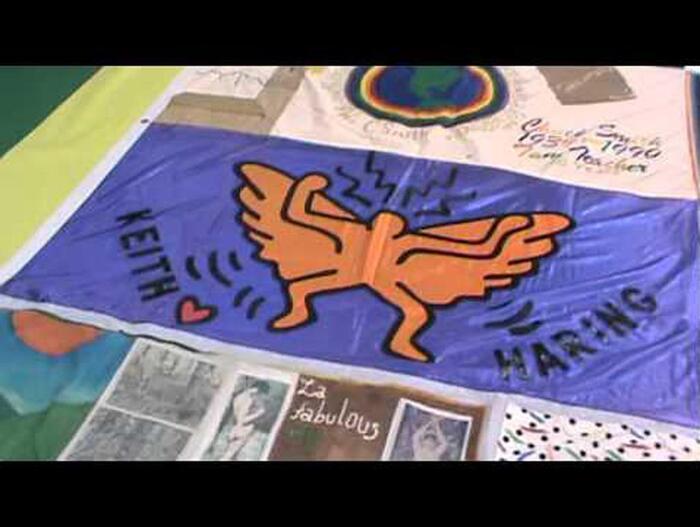“What terrifies them the most is our joy”. This is how Peppermint, activist and drag artist, opened the ceremony on the National Mall in Washington, where a monumental 9,000-square-foot installation unfolded 258 panels created by transgender people and their allies before the eyes of the world. The message was clear: to tell the story of freedom, to assert identity, and to stitch together pride and resistance at a historical moment marked by attacks on civil rights from the Trump administration.
The initiative, promoted by the American Civil Liberties Union (ACLU) a U.S. nonprofit organization dedicated to the defense of civil rights, is titled “Freedom to Be Monument.” The project came to life from a simple but powerful question, sent out along with quilting kits across the country: “What does freedom mean to me?” Answers poured in from all corners of the United States, turning into textile works rich with symbols, colors, and personal stories. Some panels demanded the right not to be labeled as male or female on official documents; others asked for the ability to remain in their own communities without having to give up safety.
The event took place on the opening day of WorldPride, the global LGBTQ+ festival hosted this year in the American capital. A celebration which, despite the expected attendance of three million people, takes place in a political and social climate increasingly hostile toward the transgender community. In the first months of his term, the GOP leader issued executive orders that restrict healthcare for trans youth, mandate the official recognition of only two genders, and ban transgender individuals from serving in the military. He also removed queer references from the National Park Service’s website, precisely during the commemoration of the Stonewall uprising.
It’s no coincidence that this massive quilt is being unfurled now, just steps away from the White House and one month before the Supreme Court is set to rule on a critical case regarding gender-affirming medical care for young people. The work is also an act of remembrance: as Peppermint pointed out, it draws inspiration from the AIDS Memorial Quilt, the commemorative work created in 1987 to honor the victims of HIV, now preserved in San Francisco. Cleve Jones, the activist who conceived that installation, said in a video message that he was honored his idea inspired this new version: a “living quilt” that celebrates those who are alive today, who are fighting, building bridges, and leading movements.
Behind the project is also the insight of ACLU communications strategist Gillian Branstetter, who chose to bypass traditional political messaging tools and instead make room for creativity. According to her, the most powerful words to express trans identity and freedom don’t come from a focus group—they come from people’s lived experiences.
Throughout the day, hundreds of visitors gathered to read the panels, listen to speeches, and dance to DJ sets. No slogans were shouted at lawmakers—only a powerful, unfiltered joy was expressed, in its purest form.












